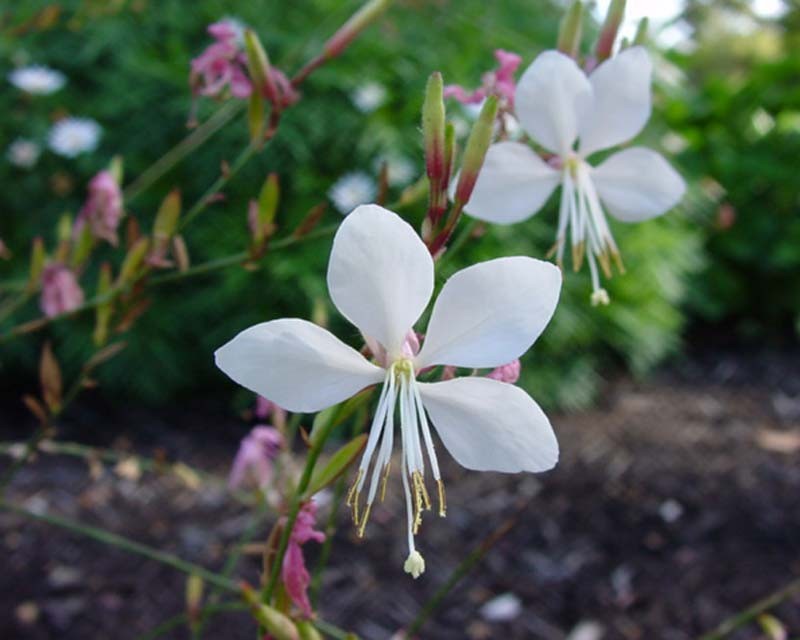White gaura
(Oenothera lindheimeri)

Description
Oenothera lindheimeri is a species of flowering plant that belongs to the family Onagraceae. It is commonly known as Lindheimer's Beeblossom or Texas Primrose. This plant is native to the southern and southwestern parts of the United States and is often found growing in open grasslands, prairies, and woodland margins. Taxonomy and Nomenclature Oenothera lindheimeri was first described by Asa Gray in 1850. The genus name, Oenothera, comes from the Greek words "oinos" meaning wine and "thera" meaning huntress, which refers to the belief that the plant's roots could cure hangovers. The specific epithet, lindheimeri, honors Ferdinand Jacob Lindheimer, a German botanist and naturalist who collected plants extensively in Texas during the mid-19th century. Description Oenothera lindheimeri is a perennial plant that can grow up to 2-3 feet tall and 1-2 feet wide. The stems are upright and usually branching. The leaves are lance-shaped, 2-4 inches long, and 0.25-1 inch wide, and are arranged alternately along the stems. The leaves are hairy and have a slightly rough texture. The flowers of Oenothera lindheimeri are a striking pink color, but they can also be found in shades of white and purple. The flowers are funnel-shaped, about 1.5-2 inches across, and have four petals. The flowers bloom in the late spring to early summer and last for several weeks. The fruit is a cylindrical capsule that is about 1 inch long and contains many small seeds. Distribution and Habitat Oenothera lindheimeri is native to the southern and southwestern parts of the United States, including Texas, Oklahoma, Arkansas, Louisiana, and Mississippi. It is often found growing in open grasslands, prairies, and woodland margins. It prefers well-drained soils and full sun to partial shade. Cultivation and Propagation Oenothera lindheimeri is a popular garden plant and is often used in native plant landscaping. It is relatively easy to grow and can tolerate a range of soil conditions, as long as they are well-drained. It prefers full sun but can also tolerate partial shade. Propagation of Oenothera lindheimeri can be done by seed or by division of the clumps. Seeds can be sown directly in the garden in the fall or spring, or they can be started indoors and transplanted later. Division of the clumps is best done in the fall or early spring. Uses and Benefits Oenothera lindheimeri has several uses and benefits, both in traditional medicine and in horticulture. Traditional Medicine The roots of Oenothera lindheimeri have been used in traditional medicine to treat a variety of ailments, including respiratory problems, stomach issues, and menstrual cramps. The roots contain a compound called tannin, which has astringent and anti-inflammatory properties. Horticulture Oenothera lindheimeri is a popular garden plant because of its attractive flowers and ease of cultivation. It is often used in native plant landscaping and can also be used as a groundcover. In addition, Oenothera lindheimeri is an important plant for pollinators, especially bees and butterflies. The flowers are a good source of nectar and pollen, and the plant is a host for the larvae of several moth species. Conclusion Oenothera lindheimeri is a beautiful and useful plant that is native to the southern and southwestern parts of the United States.
Taxonomic tree:







